Clipart tagged: ‘Nepenthes’
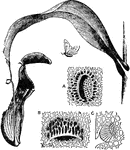
Nepenthes
"Pitcher of Nepenthes distillatoria. A, honey-gland from attractive surface of lid; B, digestive gland…

Stem of Nepenthes Distillatoria
Nepenthes is known as the pitcher plant. The distillatoria variety has bright, light green leaves. Pitchers…
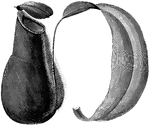
Leaf and Pitcher of Nepenthes Madagascariensis
Pitcher plant is the common name of nepenthes. The madagascariensis variety has a crimson pitcher. The…
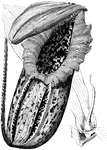
Leaf and Pitcher of Nepenthes Northiana
The common name of nepenthes is pitcher plant. The northiana variety has purple spotted pitchers. The…
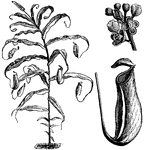
Nepenthes Phyllamphora
Pictured are the habit, detached portion of inflorescence, and pitcher of the phyllamphora variety of…
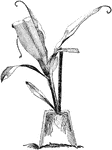
Nepenthes Propagating
Illustrated is a good method of propagating nepenthes. The cutting is placed in an inverted pot. In…

Nepenthes Rafflesiana
The flowers of nepenthes rafflesiana are yellow and brown. The pitchers are greenish yellow with brown…

Nepenthes Veitchii
Nepenthes veitchii is a type of pitcher plant notable for its wide rim. It is the parent of many hybrids.
Five Types of Nepenthes
Pictured are five distinct types of nepenthes, or pitcher plants. From top to bottom: N. villosa, N.…
Old Time Nepenthes
Pictured are three old time nepenthes, or pitcher plants. From top to bottom: N. phyllamphora, N. khasiana,…
Pitcher Plant
Illustrated is an example of how pitcher plants change their shape. The earliest, and best, are mug…

Pitchers
"Morphology of Pitchers. A, ordinary leaf of Cephalotus; B, monstrous leaf with spoon-shaped depression;…
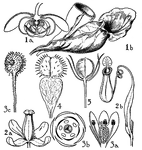
Orders of Sarraceniaceae, Nepenthaceae, and Droseraceae
The orders pictured are sarraceniaceae, nepenthaceae, and droseraceae. The flowers of these orders that…